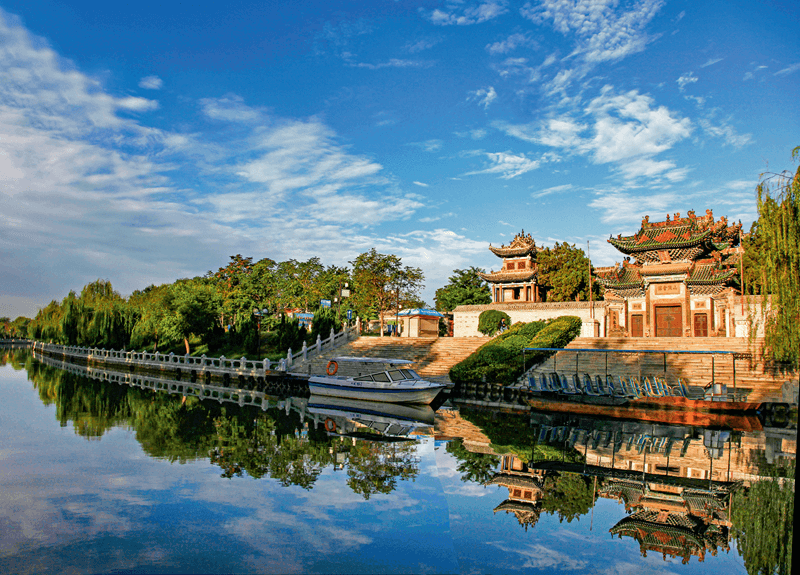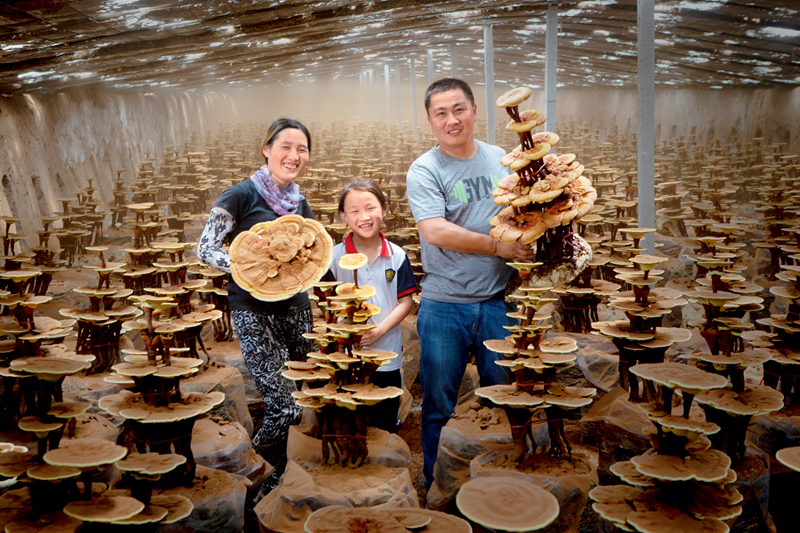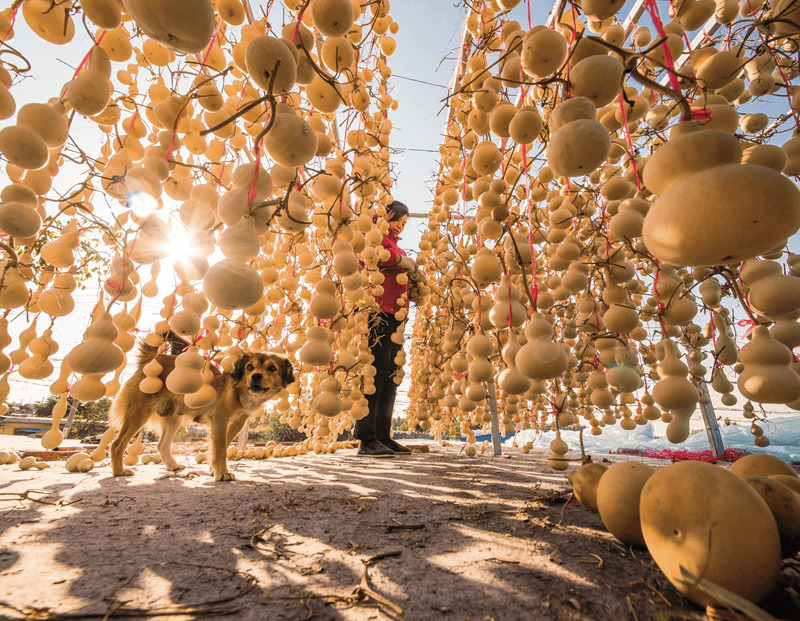Liaocheng City: A Pearl on Clear Rivers

The Yellow River intersects the Beijing-Hangzhou Grand Canal only once in Liaocheng, a city famous for its abundant water resources in eastern China’s Shandong Province.
A total of 23 rivers run through the city, each with a drainage area of more than 30 square kilometers. Liaocheng is also home to Dongchang Lake, a large urban water body, which is rare north of the Yangtze River. That is where Dongchang Ancient Town, a unique landscape known for “water in the town, town in the water,” can be found. It has also been celebrated as the “Venice of Northern China.”
The Liaocheng section of the Grand Canal is 97.5 kilometers long. After emerging as a grain transportation hub, Liaocheng gradually transformed into a commercial city with sustained prosperity for more than 400 years.
Linqing, a county-level city in the north of Liaocheng and under its administration, is another important commercial town that prospered because of the canal. In the early Ming Dynasty (1368-1644), the imperial court built three major national warehouses in Linqing. Later, with the rise of water transportation for grains, many towns along the banks of the Grand Canal became distribution centers for important commodities. To protect the emerging commercial towns, the imperial court expanded the city of Linqing. It is also called the Jade Belt City because it extends along the canal and wraps the commercial and residential areas on both sides in the shape of a belt.
Liaocheng was deeply influenced by Confucianism, and local people consider filial piety and education highly important. The commercial prosperity brought by the canal also provided favorable conditions for cultural prosperity.
At the center of Dongchang Ancient Town, Guangyue Tower is a major cultural heritage site. During the Ming and Qing (1644-1911) dynasties, many emperors, generals, ministers, and scholars climbed up the building, leaned on the railings, chanted to the moon, and composed poems. A trend of advocating literature and education emerged in those days.
During the Qing Dynasty, many famous academies such as Yangping and Qiwen were successively established in Liaocheng. Book engraving and printing industries as well as book collection activities also boomed. Haiyuan Pavilion in Dongchang Ancient Town was one of four major private libraries at that time.
Many businessmen migrated to Liaocheng from other provinces, of whom those from Shanxi and Shaanxi were the most well-known, and their guild hall was also the most magnificent. Many buildings of the guild hall feature exquisite carvings and paintings considered masterpieces of Chinese architectural art. The structures also witnessed the development and prosperity of Liaocheng across history.

The guild hall tends to be sated with cultural elements of General Guan Yu, revered as Guandi (Lord Guan) for his loyalty and bravery, so it is also called Guandi Temple. The loyalty, integrity, and social responsibility of the Shanxi and Shaanxi merchants are also integrated with the culture of Liaocheng.
Between the Liaocheng section of the Grand Canal and Dongchang Lake, a boat-like building stands magnificently. It is the Liaocheng China Canal Culture Museum. After it officially opened to the public in May 2009, the museum gradually became one of the most influential cultural calling cards of the city and an important testament to the effectiveness of efforts to protect the Grand Canal resources.
In the new era, Liaocheng people continue to draw wisdom and development momentum from the Grand Canal, embarking on a path of integrated development of culture and tourism with local characteristics. The maps show that almost all of Liaocheng’s most profound and influential historical sites are distributed along the Grand Canal.

In recent years, the city has promoted restoration of cultural relics and protection of historical sites along the Grand Canal while also cultivating new scenic spots such as Dongchang Lake and Wanyuan Garden.
Thanks in large part to the Grand Canal, Liaocheng’s cultural tourism industry continues expanding. Numerous tourist attractions integrating culture and sightseeing such as the grand theater in Jiangbei Water Town have been launched to propel a shift in the city’s cultural tourism away from single-spot sightseeing towards a city-wide tourism development pattern. Liaocheng and the Grand Canal are still achieving integrated development.
